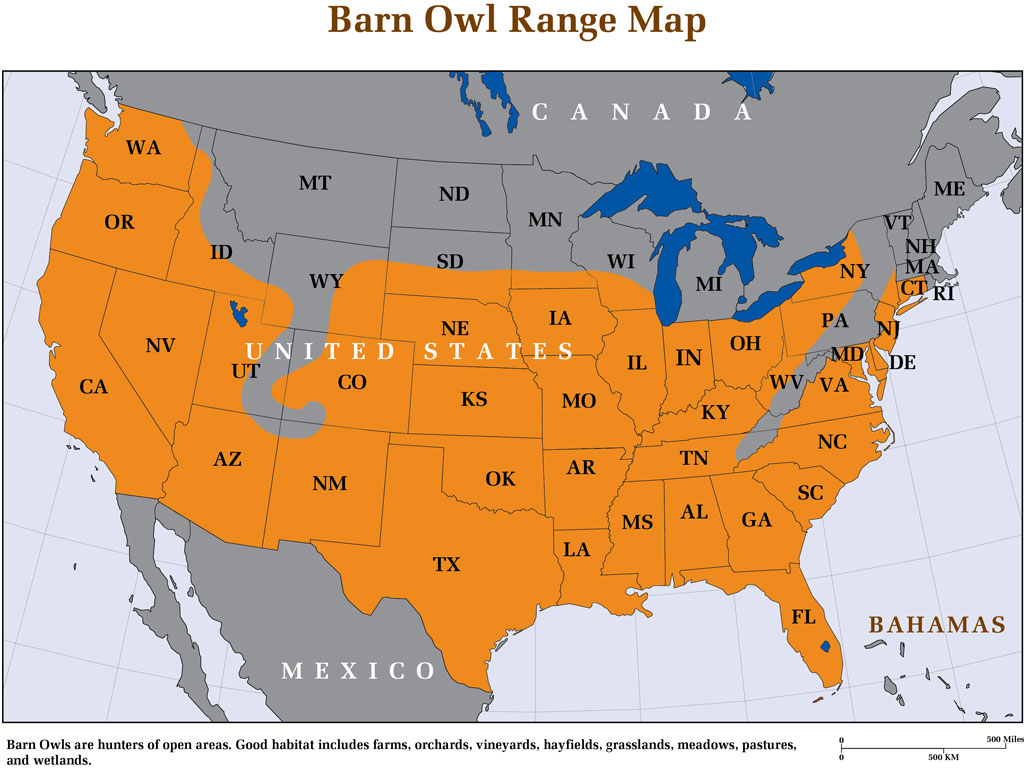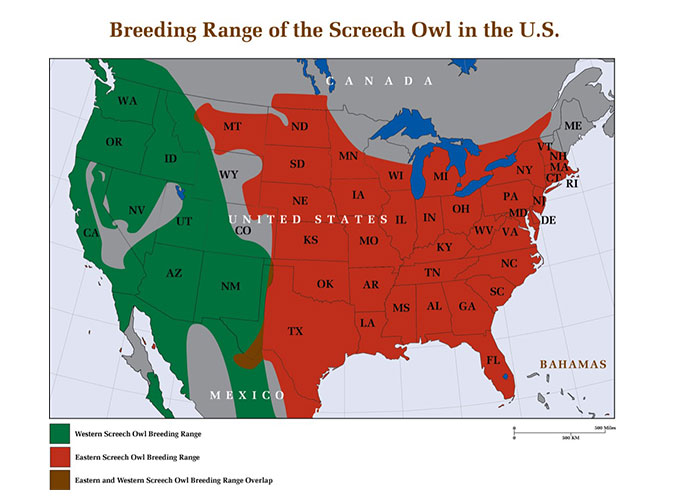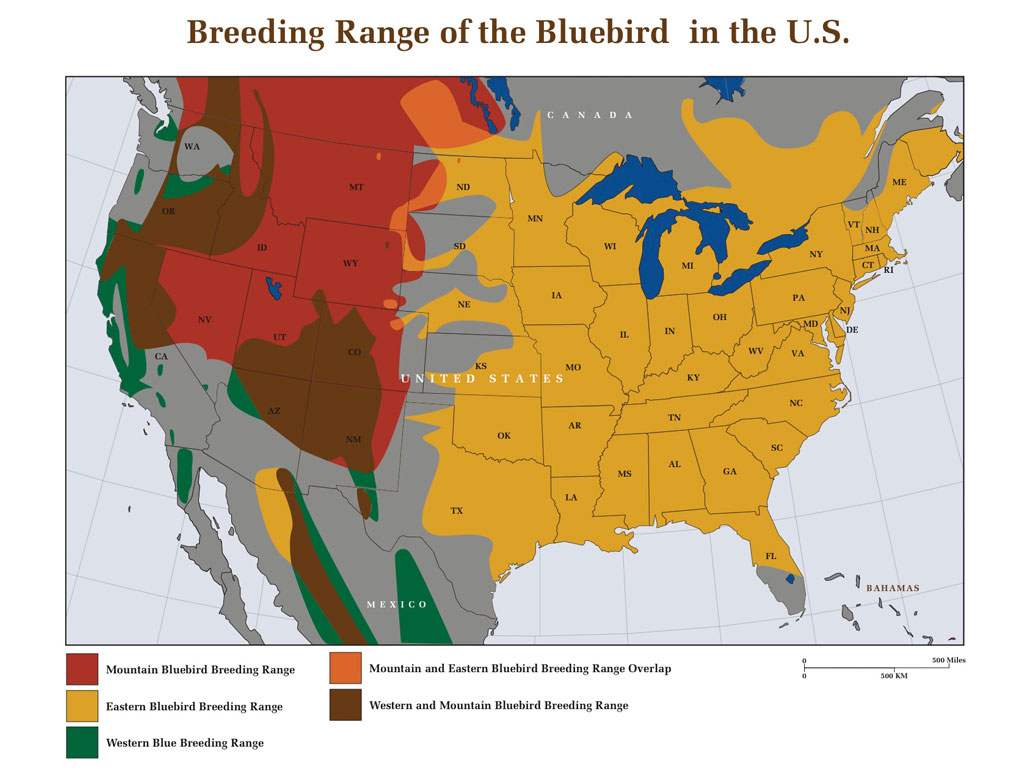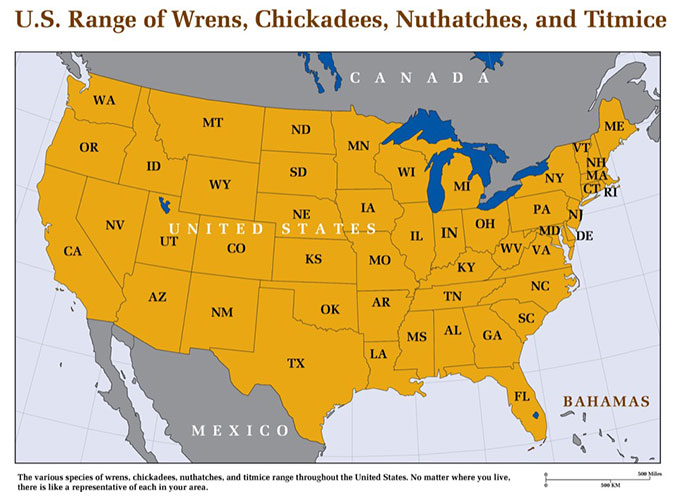Free Shipping to the Contiguous United States
West Virginia Barn Owls
Barn Owls in West Virginia
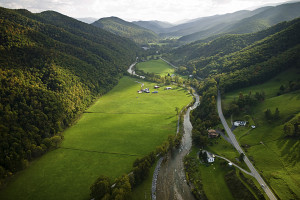
This small, mountainous state, with its extensive forests, provides intermittent, yet excellent habitat for barn owls in its narrow valleys of pasture and hay that spread like numerous fingers between the hillsides. The saving grace of West Virginia farmland is that the steep hills do not afford the chance to farm intensively; always there are plenty of trees, hedges, and fields gone fallow. In the southern portion of the state, reclaimed strip mines also provide good hunting habitat though nesting sites are scarce. Ironically, these machinery-flattened mountaintops revert to wild grasslands where a number of normally rare species find homes, including Grasshopper, Vesper, and Henslow’s Sparrows.
West Virginia is one of those states where barn owls are declared uncommon due only to a lack of surveys. Compounding the problem, most barn owl habitat is located on remote, privately owned farms and researchers must rely on farmers to report the owls.
West Virginia Division of Natural Resources
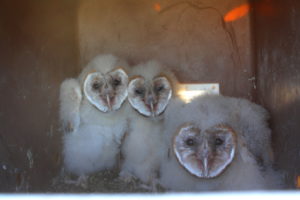
Biologist Richard Bailey of the West Virginia Division of Natural Resources has seen signs of barn owls throughout the state. He reports that the greatest concentrations of barn owls exist in the eastern half of the state, especially the South Branch Valley (Potomac River), the land surrounding Petersburg in Grant County, and in the Shenandoah Valley that runs through the far eastern panhandle, including Hardy, Mineral, Hampshire, and Morgan Counties. (However, barn owls in the remaining part of the panhandle, Jefferson and Berkeley Counties, are under increasing pressure from development.) He also cites southeastern counties such as Pendleton, Pocahontas, and Greenbrier, and the Ohio River floodplain in the northwestern part of the state as other areas that harbor barn owls in fair numbers. So, in general, good populations exist in the eastern third and the north and west; lower populations are expected in the middle of the state, yet the open valley floors between the mountains still harbor breeding pairs.
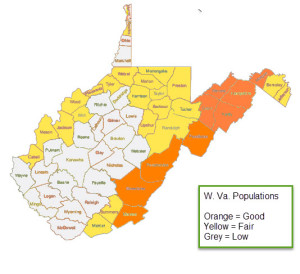
West Virginia
Range Map of Barn Owls in West Virginia
The map shows the abundance of barn owls by county. The orange counties are those with excellent populations due to plenty of open farmland, and numerous farm buildings and silos for nesting. Fair populations live in the yellow areas, and even the gray areas host breeding pairs in the many narrow open valleys between the hills. Even Brooke County at the upper western tip, where barn owls have nested in and around Bethany College for years, is thought to have a number of this large whitish owl.
West Virginia Barn Owl Breeding Sites and Seasons
Surprisingly, barn owls prosper as high as 3000 feet in the mountain valleys and even more surprising, they have been found breeding anywhere from February to November. So, despite the mountains, barn owls breed here even during winter. Most of the current nesting sites are in hollow trees, silos, barns, abandoned houses, and other outbuildings. Bailey has found piles of pellets four to five feet high in some locations that have obviously been used for decades. Pellet studies show the meadow mouse (vole) to be the predominant prey item, with shrews as the second most important food.
Reporting Barn Owl Sightings
West Virginia biologists are interested in hearing about barn owls in the state. To report sightings, please call the West Virginia Division of Wildlife in Elkins at 304-637-0245 or in Romney at 304-822-3551.

